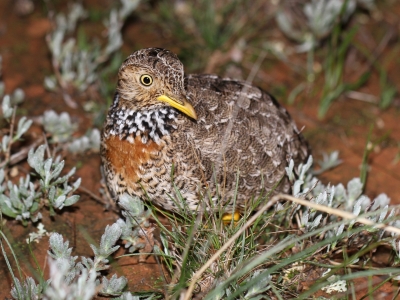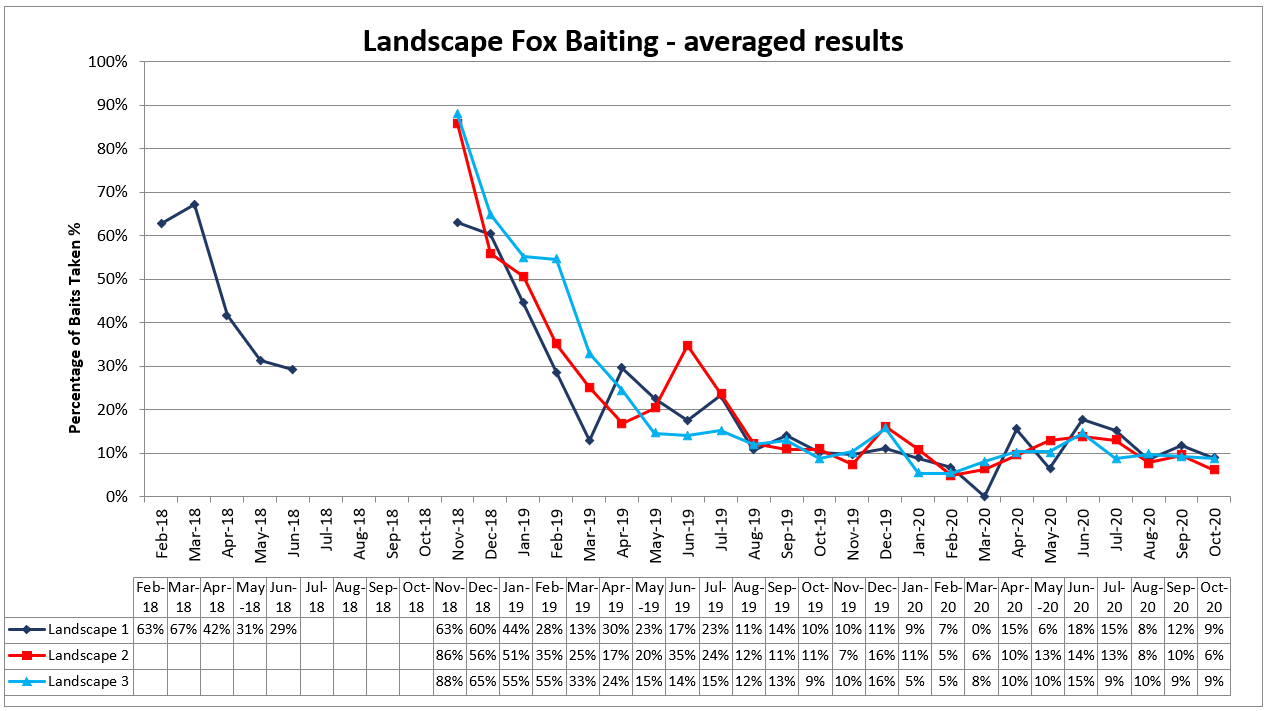Protecting plains-wanderers from fox predators
NRM NEWS - NOVEMBER 2020 - SIGNIFICANT SPECIES
By Claire Gannon
Land Services Officer - Plains-wanderer project
P: 03 5886 1203 | M: 0429 465 958 | E: claire.gannon@lls.nsw.gov.au

More than 5,900 foxes have been removed from plains-wanderer habitats over the past two years.
Foxes are a significant threat to plains-wanderers as they prey upon the bird and its eggs. Where foxes are abundant, Plains-wanderers are rare. The impact of foxes is greatest when Plains-wanderer numbers are low, which is currently the case, with only approximately 300 birds left in the NSW Riverina.
Three large landscape-scale fox baiting areas have been established across the Murray and Riverina regions. Landscape 1 near Booroorban covers approximately 42,000 ha, over five properties, has 706 bait stations, and was established in February 2018. Landscape 2 near Oolymbeayan covers about 37,000 ha, over four properties, has 452 bait stations, and was established in November 2018. Landscape 3 near Urana covers approximately 15,000 ha, over one property, has 185 bait stations, and was established in November 2018. These landscapes receive some of the most intensive baiting undertaken in south-western NSW to reduce fox numbers and limit fox predation on plains-wanderers. Follow-up shooting is also undertaken to remove bait-shy foxes.
Results of the landscape baiting programs show the percentage of baits taken is decreasing. Bait uptake at the beginning of the program was up to 80-90%. This amount has dropped to an average of approximately 10% bait uptake. The amount of baits taken is a good indicator of the number of foxes in the landscape. A lower percentage of baits taken indicates that there are few foxes in the landscape. Fox abundance is also assessed via spotlight surveys. The most recent spotlight survey for Landscape 1 in July covered 33 km without spotting a single fox.
Ongoing monthly baiting over these large landscape areas will not only have a positive impact on plains-wanderer survival and abundance, but it is already having a positive impact on sheep production in the area. Landholders participating in the landscape fox baiting program have reported higher lamb survival rates, and less ewe disturbance, and less mismothering, especially in ewes with multiple lambs.
In the longer term, these landscape areas will be used to release captive-bred plains-wanderers back into the wild, giving the captive-bred plains-wanderers the best chance of survival with lower predation risks.

This project is supported by Murray Local Land Services and Riverina Local Land Services, through funding from the Australian Government’s National Landcare Program and the NSW Government’s Saving our Species program.
